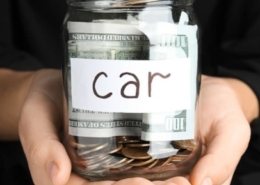How to Avoid Overpaying for a New Car
Learn how to buy a new car smartly and avoid overspending with our simple tips and strategies.
Buying a new car is an exciting venture, marking a significant milestone in life for many. However, it’s also a substantial financial commitment that requires careful consideration and planning.
The thrill of owning a new vehicle can sometimes cloud judgment, leading to impulsive decisions and overspending. Without proper planning and research, the costs can quickly escalate, impacting your long-term financial health.
Key Takeaways
- Set a Realistic Budget: Plan your budget, including all car-related expenses, to avoid financial strain.
- Research and Compare: Investigate car models, market values, and financing options to find the best deal.
- Negotiate and Review: Always negotiate the price and carefully review the contract to avoid hidden fees.
This guide aims to arm you with practical strategies and expert insights to help you navigate the car-buying process wisely.
By following these tips, you can avoid common pitfalls and ensure you get the best value for your money, making your car purchase a rewarding experience without the financial strain.
Car Buying Tip: Fair prices are hard to find in today’s tight car market. Get ahead by requesting free dealer price quotes and comparing the most competitive local offers!
24 Simple Tips to Prevent Overpaying for a New Car
Follow these steps to avoid overspending on your next new car purchase. By planning carefully, researching thoroughly, and negotiating effectively, you can ensure that you make a financially sound decision.
These tips will help you confidently navigate car-buying, securing a great deal without straining your budget.
1. Understanding Your Budget
Before stepping foot in a dealership, you must clearly understand your budget. Determine how much you can spend on a new car without stretching your finances too thin.
This includes considering a new car down payment, monthly payments, insurance, maintenance, and other related expenses.
2. Setting a Realistic Budget
Creating a realistic budget is crucial—factor in your current financial obligations and future goals. A common rule of thumb is to spend no more than 15% of your monthly income on car payments.
Use online calculators to estimate your monthly payments based on the car’s price, interest rate, and loan term.
3. Researching the Right Car
Do thorough new car research on the type of car that meets your needs and fits within your budget. Look for vehicles with good fuel efficiency, low maintenance costs, and high-reliability ratings. Consider whether you need a brand-new model or if a certified pre-owned vehicle might offer better value.
4. Avoiding Impulse Purchases
Impulse buying can lead to overspending. Take your time to evaluate different options, and don’t let high-pressure sales tactics rush your decision.
Make a list of must-have features and stick to it. Avoid unnecessary add-ons and upgrades that can quickly inflate the car’s price.
5. Negotiating the Price
Negotiation is a critical step in avoiding overspending. Do not accept the first offer. Research the car’s market value and be prepared to negotiate with the dealer. The easiest way to do this is by emailing dealerships.
Focus on the car’s total price, not just the monthly payments. Dealers may use lower monthly payments to distract from a higher overall price.
6. Considering Financing Options
Explore various financing options to find the best interest rates and terms. Compare loans from different lenders, including banks, credit unions, and dealerships. Be cautious of long-term loans that may lower your monthly payments but increase the overall cost due to interest.
7. Understanding the Total Cost of Ownership
Beyond the purchase price, consider the total cost of ownership. This includes insurance, fuel, maintenance, and depreciation. Use online tools to estimate these costs for different models. Opt for cars with lower total ownership costs to save money in the long run.
8. Trading In Your Old Car
If you have an old car to trade in, research its market value before heading to the dealership. Use an online appraisal tool to get an estimate. Consider selling your old car privately if you can get a better price than the trade-in offer from the dealer.
- How to Buy a New Car Below Factory Invoice Price – True dealer cost and the factory invoice price are not the same… dealer cost can be much lower.
- Figure a Fair Profit New Car Offer – How to calculate a fair profit new car offer.
- How to Buy a New Car Online – Not sure where to start? Use my step-by-step guide on how to buy a new car online.
9. Taking Advantage of Discounts and Incentives
Look for manufacturer incentives, rebates, and special financing offers. These can significantly reduce the price of the car. Check for discounts available to specific groups, such as students, military personnel, or first-time buyers.
10. Avoiding Extended Warranties and Add-ons
Dealers often push extended warranties and various add-ons that can drive up the cost of the car. Evaluate whether these add-ons are necessary or can be cheaper elsewhere. Extended warranties, in particular, are often overpriced and may not offer the coverage you need.
11. Leasing vs. Buying
Consider whether leasing might be a more cost-effective option for you. Leasing can have lower monthly payments and allow you to drive a new car every few years. However, be aware of mileage limits and potential fees at the end of the lease term.
12. Reviewing the Contract Carefully
Before signing any paperwork, review the contract thoroughly. Ensure that all terms match what was discussed and agreed upon. Look out for hidden fees. Do not hesitate to ask for clarification on any unclear points.
13. Getting Pre-Approved for a Loan
Getting pre-approved for a loan online can give you a better idea of your budget and strengthen your negotiating position. Pre-approval also allows you to compare offers from different lenders and choose the one that best fits your needs.
Real-Time Bargain Hunting: Turn to Edmunds for instant access to the latest and greatest local deals, saving you time, money, and stress.
14. Evaluating Insurance Costs
Insurance can be a significant part of your car’s overall cost. Get insurance quotes for the models you are considering before making a purchase. Opt for cars with lower insurance rates to keep your total expenses manageable.
15. Avoiding Unnecessary Features
When selecting your car, focus on the essential features for your needs. High-end features and luxury packages can significantly increase the price. Evaluate whether these features are worth the extra cost or if you can do without them.
16. Test Driving Multiple Models
Test drive several models to find the best fit for your needs. Pay attention to the comfort, handling, and features of each car. A thorough test drive can prevent you from making a hasty decision and overspending on a vehicle that does not meet your expectations.
17. Using Online Car Buying Services
Consider using online car-buying services that can help you find the best deals and avoid the stress of negotiating with dealers. These services often have access to many vehicles and can provide transparent pricing.
18. Evaluating Certified Pre-Owned Vehicles
Certified pre-owned (CPO) vehicles can offer the benefits of a new car at a lower price. CPO cars are usually inspected and refurbished and come with a warranty. They can be a cost-effective alternative to buying new.
19. Keeping Emotions in Check
Buying a car is often an emotional decision, but letting your emotions drive your purchase can lead to overspending. Stay focused on your budget and needs. Remember that there will always be another deal if you miss out on one.
20. Using the 24-Hour Rule
Implement the 24-hour rule: wait 24 hours before purchasing a car. This cooling-off period can help you objectively evaluate your choice and avoid impulsive decisions. Once you sign the contract, buyer’s remorse will not be a good excuse to return a car to a dealer.
21. Understanding the Dealer’s Perspective
Understanding the dealer’s perspective can help you negotiate better. Dealers have sales targets and may offer better deals at the month’s or quarter’s end. Use this to your advantage to negotiate a lower price.
22. Reading Reviews and Ratings
Read reviews and ratings from other buyers to understand the car’s performance, reliability, and overall satisfaction. Reliable reviews can provide insights you might not have considered and help you avoid models that could lead to higher costs.
23. Being Prepared to Walk Away
If the deal doesn’t meet your expectations, be prepared to walk away. There are plenty of other cars and dealerships. Walking away can also prompt the dealer to offer a better deal to close the sale.
24. Maintaining Your New Car
Proper maintenance is crucial to keep your new car in good condition and avoid costly repairs. Follow the manufacturer’s maintenance schedule and address any issues promptly. Regular maintenance can extend the life of your vehicle and preserve its value.
FAQs
What is the first step to avoid overspending on a new car?
Understanding your budget is the first and most crucial step. Determine how much you can afford to spend without compromising your financial stability.
How can I negotiate a better price for a new car?
Research the car’s market value, focus on the total price rather than monthly payments, and be prepared to walk away if the deal isn’t favorable.
Is it better to buy or lease a new car to save money?
It depends on your needs and financial situation. Leasing can have lower monthly payments, but buying may be more cost-effective in the long run if you plan to keep the car for several years.
What should I consider when choosing a car model?
Consider fuel efficiency, maintenance costs, reliability, and insurance rates. Choose a model that fits your budget and meets your needs.
How can I avoid unnecessary add-ons and fees?
Stick to your list of essential features, decline extended warranties and unnecessary add-ons, and review the contract carefully to spot hidden fees.
Why is getting pre-approved for a loan important?
Getting pre-approved helps you understand your budget, compare loan offers, and strengthen your negotiating position with the dealer.
Conclusion: How to Avoid Overspending for a New Car
Buying a new car is a significant financial decision that requires careful planning and consideration. By setting a realistic budget, doing thorough research, and negotiating effectively, you can avoid overspending and make a purchase that fits your financial goals.
Remember to consider the total cost of ownership, explore different financing options, and keep your emotions in check. With these strategies, you can drive away in your new car knowing you’ve made a financially sound decision.



















